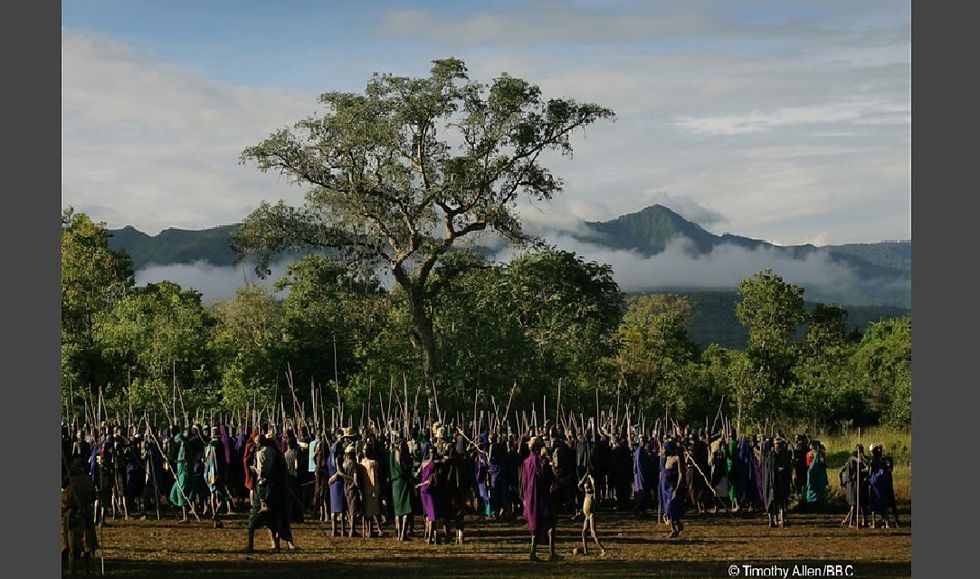The Omo Valley River of Ethiopia, making up part of the horn of Africa, is known to many researchers as the birth place of the human species. This country is home to eight tribal communities, making up a total of roughly 200,000 individuals. These small communities survive through hunting, gathering, raising cattle, and agriculture. Even though they are not exposed to extreme cold, their agricultural lives revolve around the changing seasons. After the flood season, they plant sorghum, maize and beans, taking advantage of the nutrient rich soil resulting from the river flow. The relationship between the river and the people extends to caring for their livestock as well, since the grass that grows from the rains, and the nutrients brought by the passing waters sustain their cattle (Survival International, 2017).
In addition to being labeled the origin place of the human species, Ethiopia brings forth artistic expression to the tribal people of the country. The tribespeople of the Omo Valley are no strangers to permanent markings, such as piercings, tattoos and scarification, but they find additional inspiration in the earth around them. Through temporary pigmentation, the people of the riverside are able to express themselves in different ways on a daily basis. Through a variety of minerals, fruit and ashes, many individuals can paint themselves into living canvases for a day (Jablonski, 2006). To them, every color has a different meaning. For instance, green stripes on their foreheads are used during religious rituals, dedicated to the god of rain. They utilize the colors for functional reasons as well, such as camouflage for hunting. It is believed that the origin of skin pigmentation was functional, as it has been observed that many tribes use the tints to protect themselves from excessive sun exposure, and bug bites (Silvester, 2009).
Recent years have brought forth misfortune to the tribal people of the Omo Valley, as technology brings rise to benefits for the industrialized communities. A series of 5 dams are currently in the process of completion, splitting through the course of the giant river. These dams will serve as sources for hydraulic energy toward Ethiopia and the neighboring countries of Sudan, Kenya and Djibouti. Since the construction of this dam, water sources for the tribal communities have become scarcer, as the flow of the river has become interrupted. As a result, the cattle have begun to go hungry, crops have lost their source of nutrients and the people have quickly reached a food crisis. Conflict between the tribes has escalated, and they have begun trying to move their cattle to conservation parks, where they face additional confrontation with park rangers (Postel, 2015).
As we evolve as a species technologically, smaller societies who still depend greatly on the natural world around them are facing more conflict, regarding their own safety and overall way of life. Through these conflicts, tribespeople find themselves losing land, food, water and their cultural traditions. The small communities lining the Omo River are only one example of the many tribes and indigenous communities around the globe, facing uncertainty. They currently find themselves struggling to maintain practices that have made up their histories for centuries.
References:
Jablonski, N. (2006). Skin: A natural history. Berkeley, CA: University of California.
Postel, S. (2015, December 2). Dam on Ethiopia’s Omo River causing hunger and conflict – National Geographic Society. Retrieved from http://voices.nationalgeographic.com/2015/12/02/da...
Silvester, H. W. (2009). Natural fashion: Tribal decoration from Africa. London, NY: Thames & Hudson.
Survival International. (2017). Omo Valley tribes: Gibe III dam - Survival International. Retrieved from http://www.survivalinternational




 mr and mrs potato head
StableDiffusion
mr and mrs potato head
StableDiffusion










